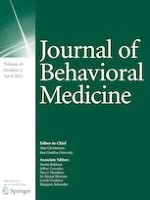23-11-2021
Psychological Impact of Ambiguous Health Messages about COVID-19
Gepubliceerd in: Journal of Behavioral Medicine | Uitgave 2/2022
Log in om toegang te krijgenAbstract
Perceiving ambiguity in health information—that is, uncertainty elicited from believing information lacks credibility, reliability, or adequacy—is typically associated with pessimistic appraisals (e.g., high perceived disease risk) and behavioral avoidance. We examined the effect of ambiguous health information about COVID-19 on health cognitions and vaccination intentions, and tested a “normalized-uncertainty” intervention. Two studies with identical methodology (online adult sample: n = 299, undergraduate sample: n = 150) were conducted in March to April 2020. Participants were randomly assigned to read one of three health messages about COVID-19 that emphasized what was currently unknown (ambiguity condition), what was currently unknown but that scientific uncertainty is expected (intervention condition), or what was currently known (control condition). The ambiguity condition led to greater perceived ambiguity than the control condition and perceived ambiguity in the intervention condition was comparable to the ambiguity condition. There were few differences in health cognitions, and no differences in vaccination intentions, when examining pairwise comparisons across the three conditions. Correlational analyses collapsing across condition indicated evidence of pessimistic appraisal but not behavioral avoidance among individuals who perceived greater ambiguity. Future research should examine longer, more detailed normalized-uncertainty interventions.
